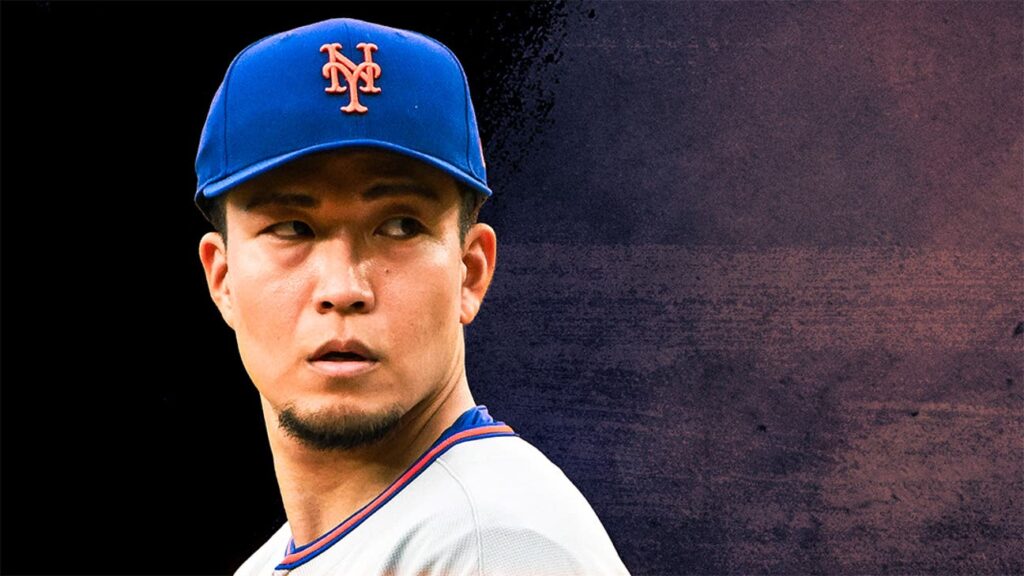As the 2025 Mets devolved from a team with World Series hopes to one that missed the playoffs, the main culprit behind their fall was the pitching — the starting rotation specifically.
Among the issues?
The season-ending injuries suffered by Griffin Canning and Tylor Megill in June, the summer struggles of David Peterson and Sean Manaea, and the transition from reliever to starter that led to truncated starts by Clay Holmes.
But the most puzzling thing that impacted New York's 2025 rotation was the Jekyll and Hyde performance of Kodai Senga.
Over his first 13 starts from April 1 to June 12 — spanning 73.2 innings — Senga posted a 1.47 ERA (3.24 FIP) while allowing just 51 hits.
During his start on June 12, Senga injured his hamstring while receiving a high throw from Pete Alonso as he covered first base. That injury kept him out for roughly a month, and there are many who draw a throughline right there when trying to assess why it all went wrong.
But Senga was strong in his first start back from the IL, tossing 4.0 scoreless innings on July 11 while allowing four hits, walking two, and striking out four.
After that, it was a nightmare for the 32-year-old, who had a 6.56 ERA (6.11 FIP) in 35.2 innings over eight starts from July 21 through Aug. 31. After his start on Aug. 31, Senga accepted an assignment to the minors, where he was unable to get his mechanics straight or find his stuff.
In light of Senga's massive struggles, and with the Mets needing to transform the starting rotation, is it time to explore a trade?
WHY IT COULD MAKE SENSE TO TRADE SENGA
More than anything, it is Senga's ongoing struggle to get his mechanics right — and the massive issues that often pop up when he doesn't feel they're 100 percent in place — that has been the most frustrating aspect of Senga's tenure in New York.
And while it took until September of this season for things to come to a head, Senga was pointing to his mechanics and "overthinking" as early as July 22.
The hope when Senga went to the minors was that it was a largely stress-free spot where he could get right. That he couldn't reach a point where he was able to return and pitch in the majors should have alarm bells going off.
Looking at Senga's pitch mix, his forkball remained elite in 2025 — hitters slugged a minuscule .188 against it — but he had serious difficulties with consistency when it came to the offering.
Meanwhile, Senga's two other most used pitches (his four-seam fastball and cutter) were crushed.
Opposing hitters slugged .543 against the four-seamer while slugging .483 against the cutter.
Beyond Senga's battle to get his mechanics in order and find the correct pitch mix is his growing injury history.
Since the start of the 2024 season, Senga has missed time due to injuries to his shoulder, calf, and hamstring. Those issues limited him to just 5.1 regular season innings in 2024 and 113.1 innings in 2025.
WHY IT COULD MAKE SENSE TO KEEP SENGA
Senga's rookie campaign in 2023 and his first few months in 2025 are proof that he can pitch near the top of the rotation when he's at his best.
His advanced numbers from April through June in 2025 show that he was perhaps due for a bit of a regression, but his 2023 was utterly dominant.
In 166.1 innings over 29 starts, Senga had a 2.98 ERA and 1.22 WHIP while allowing just 126 hits and striking out 202 batters — a rate of 10.9 per nine innings.
Senga's four-seamer (grading out in the 98th percentile) and forkball (93rd percentile) were also elite in 2023, as was his whiff percentage, barrel percentage, strikeout rate, and xBA. Meanwhile, his ground ball rate and xERA were above average.
Senga might not profile as a true ace in the event he gets it together, but he possesses high upside.
He's also relatively affordable — set to make $15 million each of the next two seasons. The Mets have a conditional club option for 2028 worth $15 million that will kick in if Senga has Tommy John surgery or a right elbow injury that keeps him on the IL for 130 or more days.
There's also the rest of the rotation to consider when weighing Senga's future. In other words, while there are concerns about Senga, there are questions surrounding most other potential members of the rotation, too.
VERDICT
Using logic and deductive reasoning, it's fair to believe that three pitchers might be penciled in right now as members of the Mets' 2026 rotation: Clay Holmes, Sean Manaea, and Nolan McLean.
Manaea did not perform well in 2025, but he was also pitching with loose bodies in his elbow. Additionally, his salary ($22 million annual luxury tax hit through 2027) could be prohibitive when it comes to finding a potential trade partner.
It's also likely that Brandon Sproat and Jonah Tong will both play a big role in 2026, though that might not come from the jump.
As far as David Peterson, who is entering his final season of arbitration, it would be hard to give up on him.
Meanwhile, it can be argued that the Mets need to find a top of the rotation starter externally — and probably will.
If you put all of it together, something will have to give. And the most sensible scenario has the Mets dangling Senga via trade.
Read the full article here


